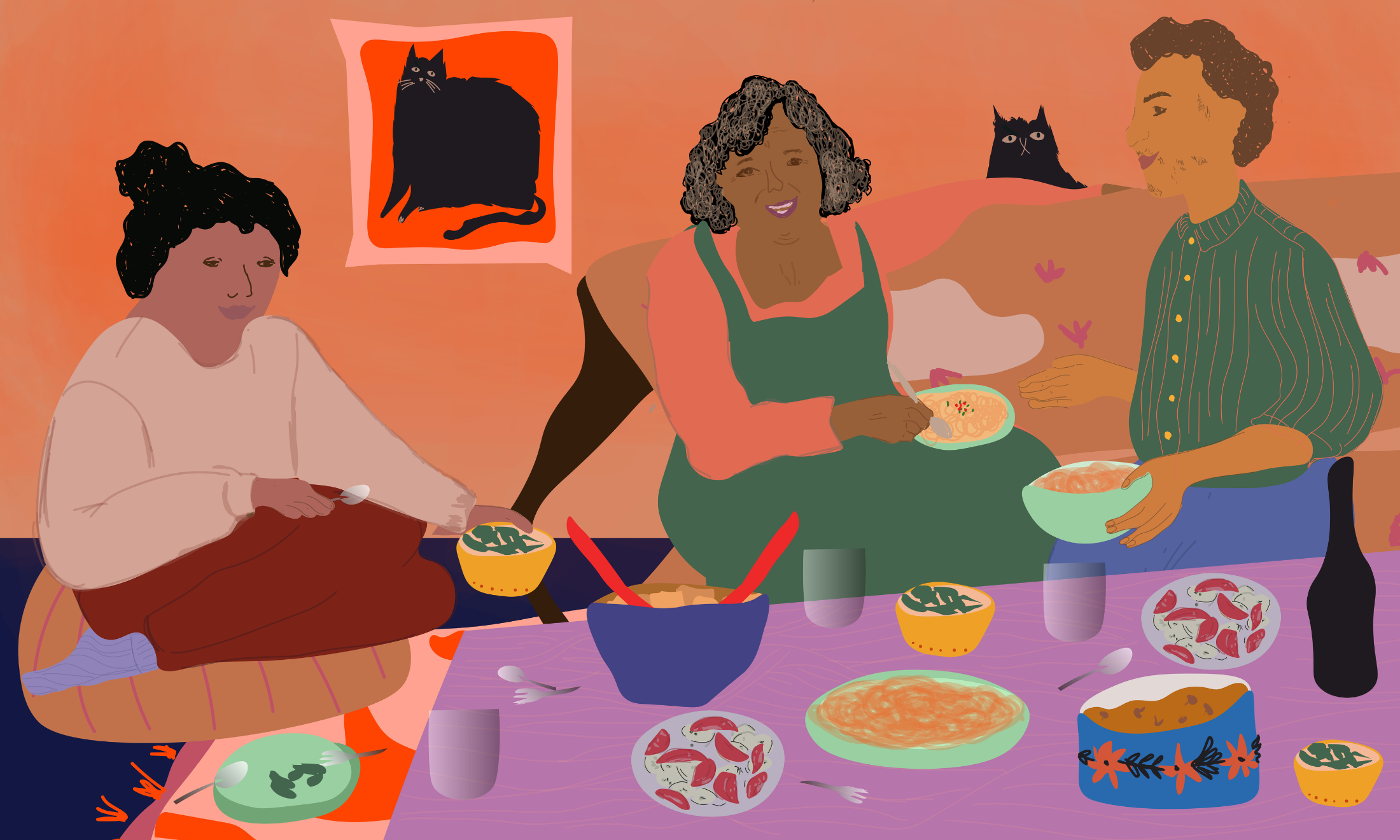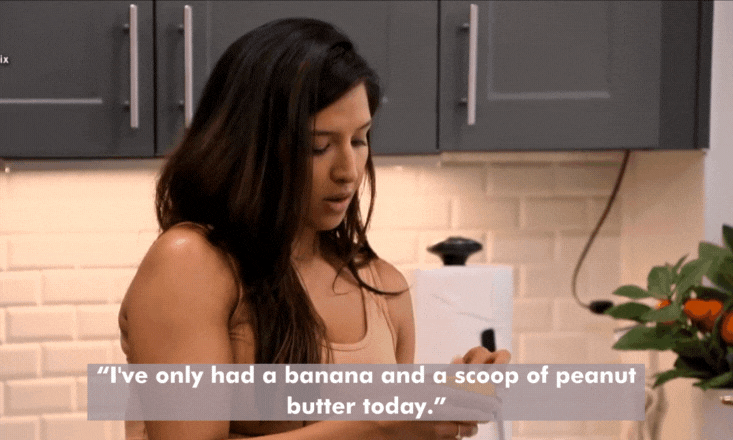Post-lockdown, I’ve rediscovered domestic intimacy in unexpected ways
After years of lockdowns and social distancing, I’ve learned there is a materiality to intimacy that goes beyond touch.
Anahit Behrooz
15 Dec 2022

Heedayah Lockman
One day in the first few weeks of this year, my two best friends and I knelt in a narrow hallway and pulled up reams of carpet that were stubbornly stuck to the floor. One of us had just bought a flat and it was ramshackle and sweet, full of high ceilings and peeling wallpaper and art propped against walls. And in every room, awful, awful carpets. “Why do the British carpet their bathrooms?” we shrieked and pretended to gag, as we continued to prise up underflooring and dulled nails from the final unexposed strip of floor.
By the end of the night, we stood outside her flat listening as the scraps of carpet fell down the length of the spiral staircase and landed with a soft phlump. Behind us, the hallway seemed wider and brighter, the dust-stricken hardwood sturdy with potential. There was something deeply romantic about it: the threads pulled clean and the screws drilled in, a home rejigged and rebuilt together. The three of us felt entangled in its history somehow, our intimacy suddenly pressed deep into the very structure of the place.
“I have spent a lot of the past three years thinking about intimacy: how it manifests, how it is practised and what happens when it is missing”
Like most people, I have spent a lot of the past three years thinking about intimacy: how it manifests, how it is practised and what happens when it is missing. The pandemic made inescapably clear the ways in which intimacy is as tactile as it is psychic; a state of mutual vulnerability and desire that requires touch and proximity and the breathing of the same air. But during those months when we kept anxiously to our own floors and walls and skirted around objects and other people, I learned there is also a materiality to intimacy that goes beyond touch. A materiality that speaks to our willingness to co-exist in the same physical spaces and amongst the same things, to entangle our affections and attachments within our very surroundings.
The word camaraderie has its roots in the Latin word for room, used once upon a time to describe people who discovered tenderness in the shelter and stability of a shared room. When I think of my friends and myself, I think of late night conversations and bodies leant together on the same sofa. But I also think of the sofa itself, and the ways in which it’s a cipher for our determination to hold fast to each other, to sit and sit and sit. The same tchotchkes picked up and passed around, the same walls brushed past, the same blankets thrown over our bodies. It is little wonder, perhaps, that the spaces in friendship sitcoms become so culturally iconic and so pregnant with significance. The mere outline of Monica’s couch in Friends and the dining table in The Golden Girls is enough to immediately conjure the ghosts of those that normally cluster around them.
“When I think of my friends and myself, I think of late night conversations and bodies leant together on the same sofa”
It is a kind of domesticity, but a domesticity that is cast in a new, subversive light, miles away from the claustrophobic obligation of our collective gendered past. The spectre of the domestic space has for so long been used to keep women and femmes in their place. The home has been tied to the labour of housework and away from social and economic independence, so much so, that reclaiming it as a tool for security and care, even in the simplest ways, feels like a radical act. It is a way of imagining homemaking beyond servitude, and beyond the narrowing of walls. Scratch the paint from my kitchen’s wall and the names of my friends and I would appear, scrawled in pencil before the first slick of paint was applied, marks from our past now sitting forever in the strata of its surface.
Postcards from countries and museums that we have visited are tacked to the walls of my living room. Furniture, pulled along the road and up the many flights of stairs by our joint efforts, sits crowded in corners. Bags of flour and jars of honey that have migrated between our kitchens lie patiently in the cupboards. When my friends come over, I know they know their way around because they have been here so often, and because they helped anchor the empty spaces with their presence so long ago. I watch them instinctively reach for the right thing in the right place. It is a joyous grounding, as if their familiarity in its material spaces, and these material spaces’ familiarity with them, reaffirms my own sense of belonging: a confirmation that this is where I am safest and most myself.
“When my friends come over, I know they know their way around because they have been here so often, and because they helped anchor the empty spaces with their presence”
I am grateful that this year brought all of this back: the electricity of others pressed into the same spaces, the unceremonious ease of another person’s jumper picked up from the floor and pulled on, the intimacy of our implicated physical co-existence in this world. But beyond the strange, welcome re-emergence of this year, I am so grateful that any of this is possible at all; that a home is no longer something that is built with a singular partner, that it is no longer a monument to an isolated and fixed imagination of intimacy.
Virginia Woolf wrote that a woman needs a room of her own if she is to have any sort of social, political or economic freedom. Certainly that is true, but glancing around my small flat I am struck by how very not mine it also is, and how it has been shaped by the many, indispensable entanglements that have formed every other part of my life. I don’t think I could pull apart its dense, rich archaeology if I tried. These layers of memories and intimacies have been inscribed into and beyond its surfaces, a palimpsest that has transformed the space and me into who we are today.
The contribution of our members is crucial. Their support enables us to be proudly independent, challenge the whitewashed media landscape and most importantly, platform the work of marginalised communities. To continue this mission, we need to grow gal-dem to 6,000 members – and we can only do this with your support.
As a member you will enjoy exclusive access to our gal-dem Discord channel and Culture Club, live chats with our editors, skill shares, discounts, events, newsletters and more! Support our community and become a member today from as little as £4.99 a month.









